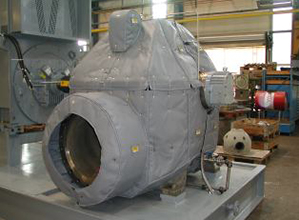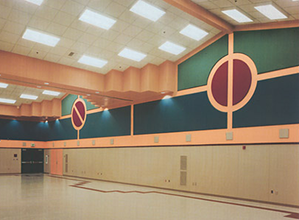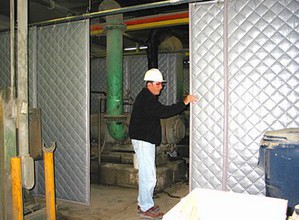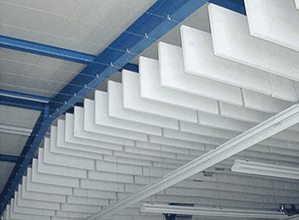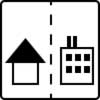Air Compressor Sound Control
Achieving Noise Control Goals
First and foremost:
- Can the compressor be moved to an area or room to reduce or eliminate worker exposure?
- Can you more the workers and/or the process to a safe distance away from the noisy compressor?
If neither of these are an option, some sort of engineering controls in the form of sound abatement can be constructed or applied.
Acoustic enclosures, or sound barriers, are a common solution for the noise reduction of air compressors. The noise enclosures can be constructed of several different materials. Common building materials such as stud and gypsum board or plywood in conjunction with sound reduction materials can be an inexpensive way of soundproofing your air comprsesor.
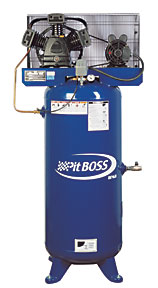 Several critical items should be addressed when applying a sound enclosure for noise control:
Several critical items should be addressed when applying a sound enclosure for noise control:
- How much air does the compressor need to function and where will this air supply come from?
- How much air does the motor need for cooling the heat it generates?
- How will I supply the compressor and motor air without sound escaping from the sound housing?
- What accessibility will be needed to maintain the air compressor?
- How will I provide the access for maintenance in the noise enclosure?
All of these items can be addressed and fulfilled by using the correct application of engineered sound reduction products and noise reduction materials.
Depending on the current sound levels of the compressors and your noise reduction goals, an abatement solution can be determined. In most applications, a sound curtain enclosure will meet your sound reduction needs. This is a two to four sided enclosure with or without a roof. Typically a frame and track is constructed to suspend the sound curtain panels. This can be provided by the acoustical material supplier or constructed on your own with tube steel, angle, or strut. The sound curtain material is a composite material bonding mass loaded vinyl with an acoustical absorber and faced with a vinyl diamond stitched facing. The vertical edges velcro together to form walls and the panels are suspended by grommets to the framework. Roof panels, silenced ventilation baffles, clear vinyl sound barrier windows, and movable track and trolley system are some of the options available. The sound curtain solution, depending on design, will typically achieve reductions in the range of 10 – 18 dBA.
For sound critical areas, a steel enclosure should be considered. These are self-supporting structures of varying design and connection. Typically 4″ thick modular panels with solid steel outer skin and a perforated steel inner skin and 4″ thick of acoustical insulation. Available options include acoustical doors, windows, silenced ventilation, forced air ventilation, lighting packages, removable panels, and silencers. Reductions of 20 – 35 dBA can be achieved.
Some simple planning and/or expert advice will lead you down the right path to avoiding or reducing a sound problem with your air compressor.
